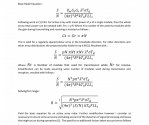In most cases, the ability to sustain high power radar operation is limited by cooling not power generation. The fact that the J-10C radar is liquid cooled and housed in a redesigned forward fuselage implies that it should compare very favorably to the retrofitted AESAs on the Rafale or the F-16.
Yeah this is good. Liquid cooling does indeed provide more cooling capacity than air cooled which limited to about 2-3 KW/sqm of antenna aperture. Rafale AESA however is also liquid cooled. The liquid cooling performance in other hand would be limited typically by the amount of fuel the aircraft can carry as that's the medium where the coolant solution will dump the heat.
Thus more fuel = more cooling potential.
In the other hand, air cooling is easier to implement, light and may have little impact to the aircraft's structure, thus why those AESA upgrades for legacy fighters are typically air cooled.
However the main driver of AESA performance would be number of TRM's as the performance gain, scales by cube of TRM. Radar that can pack more TRM's than the other will usually "win" in terms of performance. Radar with less number of TRM's when trying to match the performance of the radar with more TRM's will be "penalized" in cooling and power requirement and thus cost.
---------
Trying to compare J-10 AESA's with "other kids in the block" could start with comparing number of TRM's. Let's say, from a twitter poster i got 1200 TRM's for J-10B AESA, how does that compare to say an APG-79 with 1368. One can then use the 4th root law with cube of the TRM's. Using APG-79 as base.
Rfac=((1200/1368)^3)^(1/4)
Rfac=0.906
Basically the range of the J-10 AESA is 10% shorter than the APG-79. How about comparing with AN/APG-80 with 1020 TRM ? same method.
Rfac=((1200/1020)^3)^(1/4)
Rfac=1.13
Thus the J-10 AESA would have 13% range advantage over APG-80.
and how about Rafale ? It has TRM count of 838 according to photo although you will see people claiming 1000 TRM. If we stick to the google image it would be :
Rfac=((1200/838)^3)^(1/4)
Rfac=1.3
The 1200 TRM AESA will have 30% advantage in range. But hey how about element power ? Same methods. Let's say the French put TRM twice the power of the J-10's or a factor of 0.5 against the J-10.
Rfac=((1200/838)^3*(1/2))^(1/4)
Rfac=1.1
The French radar gained 20% (should be closer to 19% however) range but radar with larger amount of TRM still wins. In order to match or maybe reverse the gain from having more TRM's. The TRM power would need to be increased by factor of at least 3. This however will have direct impact on cooling, power requirement and cost of the TRM's.

